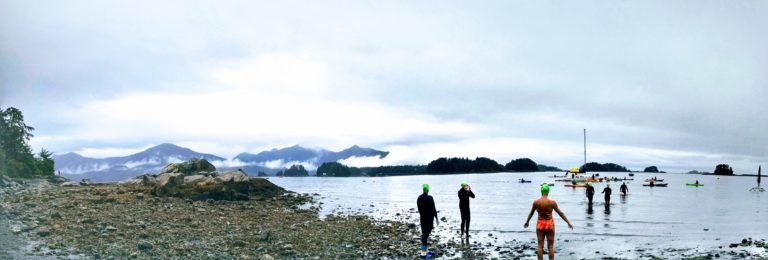As most of you have experienced, relationships change with time. When I first began practicing yoga I was focused on developing strength and concentration. Later it became very meditative for me; eventually this became a problem as I tackled thoughts that I preferred to push away rather than deal with. During this period my practice became dangerous; I sought pleasure from my practice so I would intentionally push past my edge, or neglect entire groups of poses just so they would feel good when I reintroduced them. Luckily I didn’t physically injure myself during this period and I moved onto a more playful practice and began to focus on practicing safely.
This winter I took four months off of my physical practice to challenge myself in other ways. Upon returning to my practice in February I had new challenges in my life that I needed to deal with on the mat. I decided that I would run a marathon in October and and the training was beating up my body in ways it had never been before. I’ve seen athletes have their performances enhanced by yoga but I have also seen it ruin an otherwise strong training cycle.
I teach a style of yoga known as vinyasa. It effectively links breath with movement and flows from one pose to the next. In class you may hear the instruction to “flow through your vinyasa.” This refers to a common series of poses that is repeated frequently in classes. The series goes:
Inhale to plank
Exhale to chaturanga
Inhale to upward facing dog or baby cobra
Exhale to downward facing dog
You may be instructed to go through this series a few dozen times depending on the class. I began noting what was bothering me in this series and came up with the following notes on the vinyasa.
 |
| via http://www.satyaliveyoga.com.au |
Plank
This seemingly straightforward pose offers many points of reflection. Begin to build body awareness (and core strength) by drawing the navel up and in towards the spine. Focus on stacking the heels over the balls of the feet. Reach the chest and crown of the head forwards while the gaze stays to the ground so that the vertebrae of the neck remain in neutral alignment with the rest of the spine. Rotate the upper arm so that the elbow crease points forwards.
 |
| via http://www.poweryoga-goettingen.de |
Transition to Chaturanga
Keeping the body still, simply bend the elbows. Since the elbow creases are pointed forwards, this brings the shoulders forwards, lowering them to the same height as the elbows. Chaturanga and plank are virtually the same alignment so if you focus on rotating the upper arm, you will be able to transition here without moving anything.
Transition to Upward Facing Dog
The elbow crease should still be a major point of focus. Straighten the arms as if you were going back into plank. Gently draw the hips forward just enough so that you must roll over the toes and onto the tops of your feet.
 |
| via http://yoginisam.com |
Upward Facing Dog
Keep the arms strong while pressing into the hands so that the shoulders aren’t creeping up towards the ears. The palms and the tops of the feet bear the full body weight in this pose so it will be much easier if you stay engaged in the core to prevent your whole torso from becoming dead weight. Play with this and notice how different the pose feels. Relax the glutes and feel the low back release.
Transition to Downward Facing Dog
First, pay attention to how the feet transition. The feet move from bearing the body’s weight on the tops of the feet to the bottom. This requires bringing the feet through almost 180 degrees of motion while still bearing that weight. To protect the ankles, make sure that there is no rotational motion in the ankles; the lower leg, ankle, and foot should remain in the same plane. Try to drive this transition just by engaging the core to lift the hips up and back towards the heels.
Downward Facing Dog
 |
| via fitbie.msn.com |
Focus on pressing the palms fully into the mat while rotating the upper arms in so that the elbow creases work towards pointing forwards and the shoulders are stable, the upper back broad. The neck relaxes, allowing the head to drop down, bringing the gaze towards the feet. Keep drawing the navel up and in so that you don’t sink into your low back, placing undue stress there. Pay attention to your knees. Depending on how naturally flexible you are, it is really easy to lock your knees in this pose. I consciously try to keep a noticeable bend in my knees now which takes a lot of strain out of my calves and ankles. Bending deep into the knees and rising up onto the toes allows you to stretch the feet. Focus on shifting weight backwards into the hips and your shoulders won’t struggle throughout your practice.

